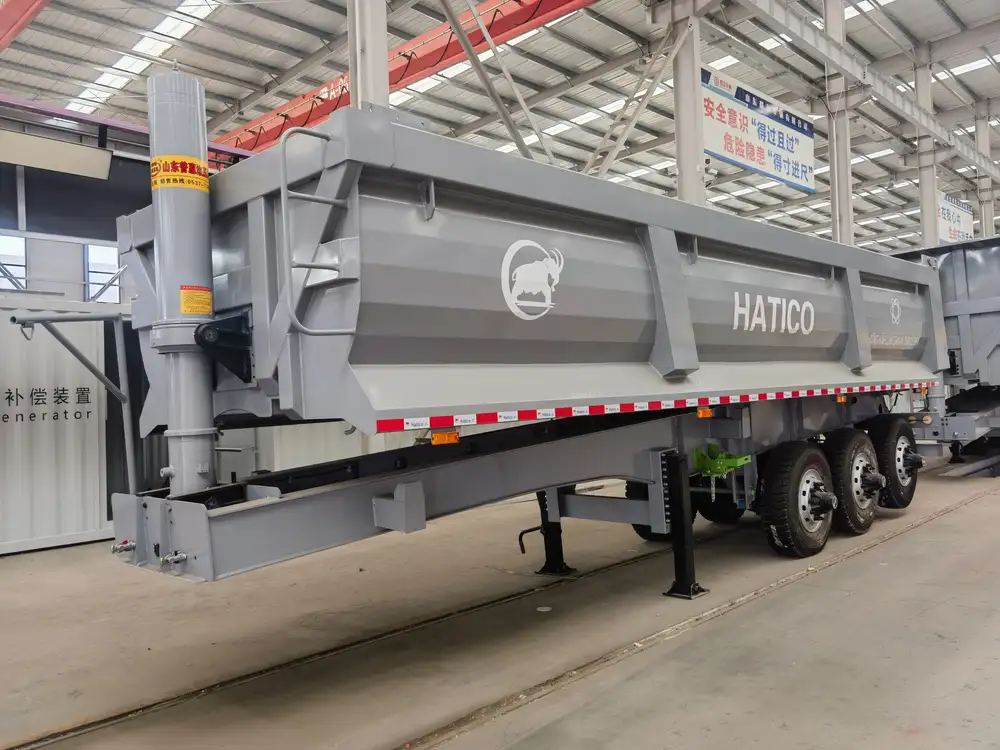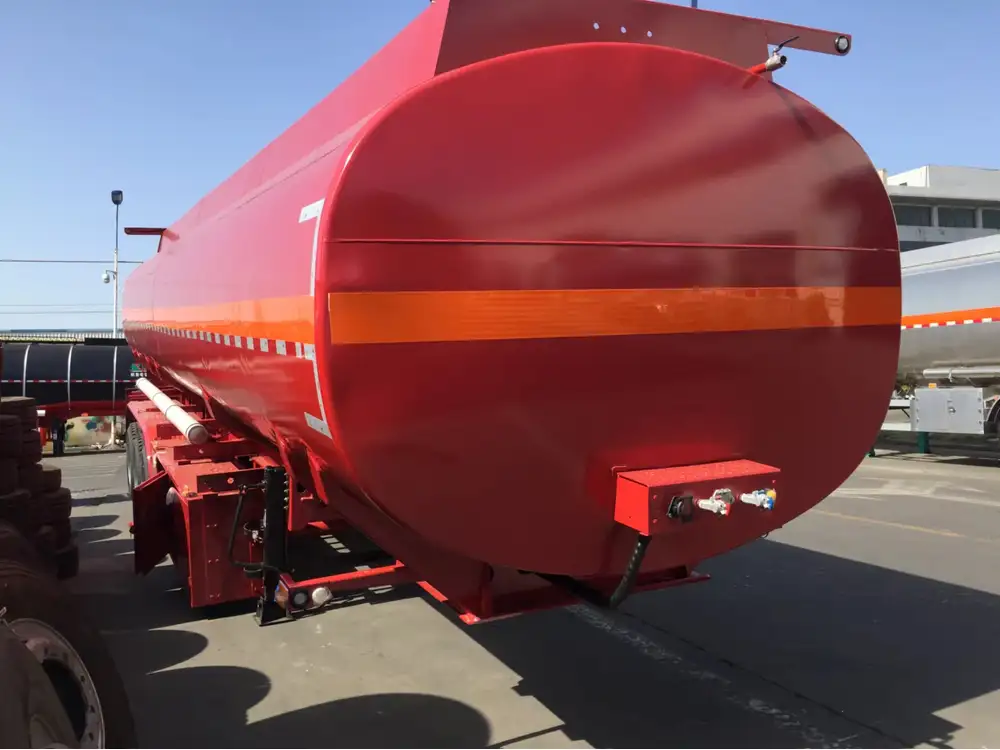Unloading a semi-trailer can often appear daunting, particularly when you don’t have the luxury of a forklift on hand. However, with the right methods and tools at your disposal, you can efficiently and safely manage this task. This guide provides detailed insights and techniques that not only streamline the unloading process but also ensure safety and efficiency.
Understanding the Challenges of Unloading a Semi-Trailer
Unloading a semi-trailer without a forklift involves navigating various challenges, such as:
- Weight Distribution: Heavy loads can complicate the unloading process, posing risks of tipping or spilling.
- Space Constraints: Limited space around the trailer can hinder movement and accessibility.
- Safety Hazards: Ensuring the safety of personnel and equipment during unloading requires careful planning and execution.
Let’s explore your options in detail, breaking down the process into manageable steps.
Essential Tools and Equipment
Before embarking on the unloading process, gather necessary tools and equipment:
| Tool/Equipment | Purpose |
|---|---|
| Pallet Jacks | Securely lift and maneuver pallets. |
| Hand Trucks | Facilitate the movement of smaller loads. |
| Ramps | Provide a gradient for sliding loads out. |
| Straps/Ratchets | Secure loads to prevent shifting. |
| Dollies | Aid in moving heavy or awkward items. |
Having these tools on hand helps you perform the unload efficiently, while minimizing injury risks.

Step-by-Step Guide to Unloading Without a Forklift
1. Preparation is Key
- Assess the Cargo: Understand the nature and weight of the goods stored within the trailer. Heavy items require more attention.
- Clear the Surrounding Area: Ensure the space around the trailer is clear to allow for safe movement.
- Gather Tools: Equip yourself and your crew with the necessary tools listed above.
2. Establish a Safety Protocol
Safety should be your utmost priority. Implement the following recommendations:
- Personal Protective Equipment (PPE): All team members should wear appropriate PPE including gloves, safety shoes, and helmets.
- Clear Communication: Utilize walkie-talkies or hand signals to maintain communication, especially in noisy environments.
- Spotter Positioning: Designate a spotter who will oversee the unloading process and ensure safety.

3. Utilize Ramps for Safe Unloading
Using ramps is an effective strategy to unload items without a forklift. Here’s how:
- Select the Right Ramp: Ensure the ramp can support the weight of your cargo.
- Secure the Ramp: Fasten the ramp to both the ground and the trailer securely to prevent slippage.
- Roll Items Down: Use dollies to roll heavy items down the ramp, ensuring that they are properly secured with straps.
4. Employ Hand Trucks and Pallet Jacks
Hand trucks and pallet jacks are indispensable in facilitating the unloading process for palletized goods.
Hand Trucks
- Positioning: Slide the hand truck underneath the item.
- Tilt and Load: Tilt the hand truck backward to lift the item off the ground.
- Transport: Carefully maneuver the hand truck to the desired location.

Pallet Jacks
- Insert the Forks: Place the forks of the pallet jack under the pallet.
- Lift: Use the handle to pump until the pallet is off the ground.
- Navigate: Move the pallet jack out of the trailer and to its unloading zone.
5. Sliding Method for Unloading Bricks, Tiles, or Similar Loads
For flat, stable items such as bricks or tiles:
- Create a Sliding Surface: Lay down planks or a smooth surface leading from the trailer to the ground.
- Prepare for Movement: If items are stacked high, pull the stack to the edge of the semi-trailer.
- Slide: Push items gradually off the edge to slide down. Ensure to control sliding speed to prevent breakage or spilling.
6. Stacking and Organizing After Unloading
After unloading, organizing your items can save time in the long run. This step involves:
- Designate Areas: Clearly mark designated areas for different product types.
- Stack Securely: Ensure that all items are stacked safely to prevent accidents.

Best Practices to Enhance Unloading Efficiency
1. Plan Ahead
Planning the unloading sequence can save time and effort:
- Prioritize Heavy Loads: Unload heavier items first to prevent accidents with items stacked above.
- Use Clear Labels: Make sure all items are labeled clearly, aiding in quick identification.
2. Team Coordination
Fostering a collaborative environment between team members boosts unloading efficiency:
- Assign Roles: Have clear roles for each team member to streamline operations.
- Regular Briefings: Hold quick meetings to address any challenges that arise during unloading.

3. Regular Training and Safety Drills
Training sessions can optimize team effectiveness and safety awareness:
- Safety Drills: Conduct drills to prepare for emergencies.
- Tool Proficiency: Ensure all team members are trained on how to safely operate equipment.
Conclusion: Mastering the Unloading Process
Unloading a semi-trailer without a forklift is not merely about brute force but requires skill, methodical planning, and the right equipment. Implementing these strategies ensures a safe and efficient unloading process, minimising delays and preventing workplace accidents.
By being prepared and adopting best practices, you save time and enhance productivity, allowing your team to focus on driving value where it matters most. Transform your unloading practices today, reaping benefits in safety and operational efficiency, and converting your unloading challenges into a streamlined process.
Additional Resources
- Safety Management Practices: Explore ways to maintain a safe working environment.
- Equipment Maintenance Logs: Keep regular track of equipment status to ensure readiness.
- Workplace Organization Guidelines: Learn about effective organization strategies to enhance workflow.
In your quest to optimize unloading, consider the principles discussed above your roadmap to enhanced operational efficiency—one unloading session at a time.
By applying these principles, you can surpass competitors and address user search intent more effectively, solidifying your position in the semi-trailer unloading industry.



